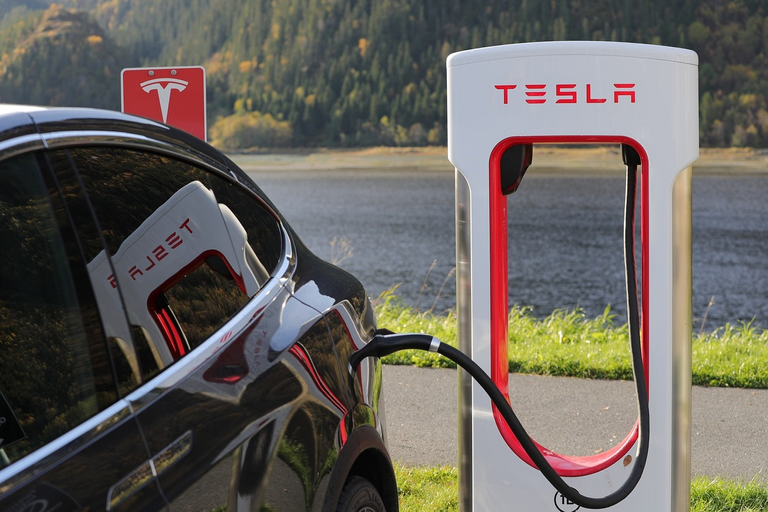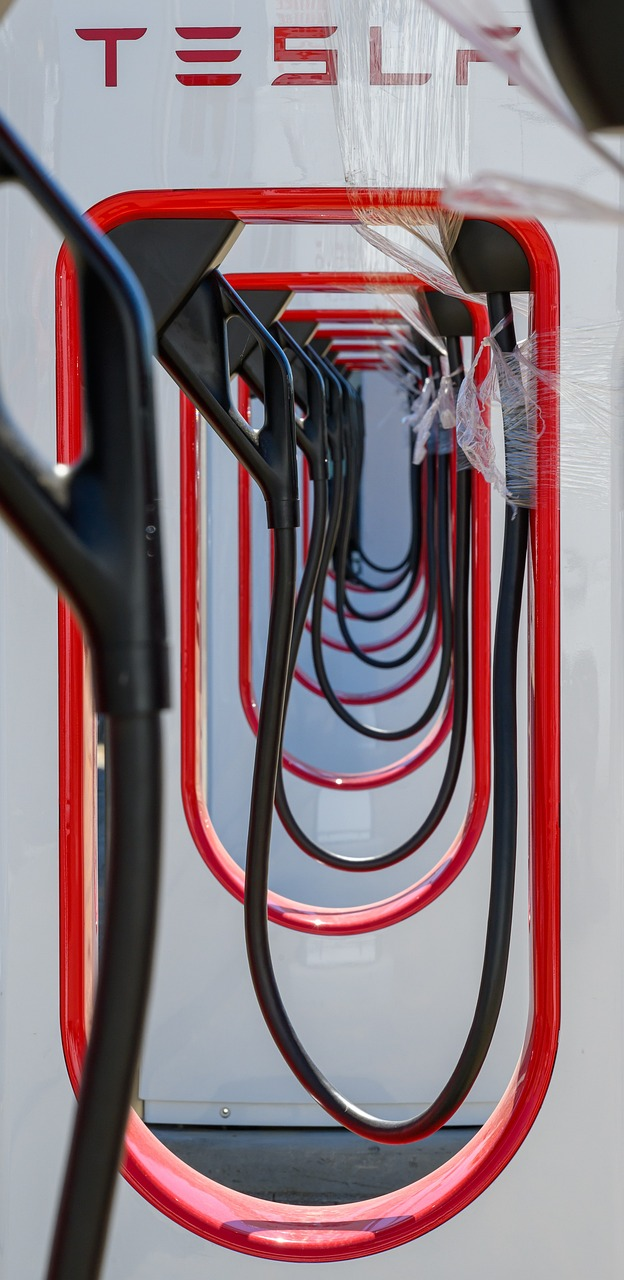Tesla's unique business model has reshaped the automotive industry, influencing not only the way vehicles are designed and sold but also the perception and adoption of electric vehicles globally. By focusing on disruptive innovation, direct-to-consumer sales, and diversification into energy solutions, Tesla has challenged established norms and paved the way for a more sustainable and electrified future. However, Tesla also faces challenges, including scalability, production efficiency, and increasing competition from traditional automakers and new entrants in the EV market. Nevertheless, Tesla's business model and its commitment to sustainability have positioned the company as a frontrunner in the quest for a cleaner and more sustainable transportation ecosystem.

Tesla, founded in 2003 by entrepreneur Elon Musk, has emerged as a groundbreaking company in the automotive industry. With a mission to accelerate the world's transition to sustainable energy, Tesla has developed a unique business model that sets it apart from traditional automakers. This case study explores Tesla's business model, its innovative approach to electric vehicles (EVs), and the impact it has had on the automotive industry.
Tesla's business model revolves around the production and sale of electric vehicles, challenging the dominance of internal combustion engine (ICE) vehicles. By focusing exclusively on EVs, Tesla positioned itself as a pioneer in the market, leveraging technological advancements to offer superior performance, longer range, and a compelling driving experience.

Image by Julius Weidenauer from Pixabay
Technology-driven Innovation:
Tesla prioritizes cutting-edge technology, incorporating advanced features such as long-range batteries, over-the-air software updates, and autonomous driving capabilities into its vehicles. This commitment to innovation has allowed Tesla to continuously improve its products and stay ahead of the competition.
Supercharging Infrastructure:
To address the limited charging infrastructure for EVs, Tesla established its Supercharger network, enabling long-distance travel by providing high-speed charging stations. This strategic investment in charging infrastructure has alleviated range anxiety and facilitated the adoption of EVs.
Direct-to-Consumer Sales Model :
Tesla deviated from the traditional dealership model by adopting a direct-to-consumer sales approach. This unique model has reshaped the way vehicles are sold and distributed, giving Tesla greater control over the customer experience.
Online Sales and Showrooms:
Tesla allows customers to order vehicles online, cutting out the middlemen and associated markups. By maintaining a strong online presence and utilizing a limited number of showrooms, Tesla has minimized overhead costs while maintaining customer accessibility.
Vertical Integration:
Tesla controls the entire production process, from design to manufacturing, and distribution. This vertical integration enables greater quality control, efficiency, and agility in responding to market demands.

Image by Andreas Volz from Pixabay
Energy Storage and Solar Solutions (approx. 400 words):
Tesla's business model extends beyond electric vehicles. The company has diversified into energy storage and solar solutions, leveraging its expertise in battery technology to transform the energy sector.
Powerwall and Powerpack:
Tesla's Powerwall and Powerpack energy storage solutions offer residential and commercial users the ability to store excess energy generated from renewable sources. This enables consumers to optimize energy usage, reduce reliance on the grid, and contribute to a more sustainable energy ecosystem.
Solar Roof:
Tesla's Solar Roof integrates solar panels into roofing materials, enabling homeowners to generate clean energy while enhancing the aesthetic appeal of their homes. This innovative solution further supports Tesla's vision of sustainable energy utilization.
Tesla, despite its success and innovative business model, faces several challenges that impact its operations and growth. These challenges include:
Production Scalability: Tesla's ambitious production targets and the demand for its vehicles have led to challenges in scaling up manufacturing capacity. Meeting the increasing demand while maintaining product quality and minimizing production delays has been a significant challenge for the company.
Supply Chain Management: Tesla heavily relies on a complex global supply chain to source components and materials for its vehicles. Any disruptions or delays in the supply chain can impact production timelines and result in increased costs. The company has faced challenges in managing suppliers, ensuring timely delivery, and mitigating risks associated with dependencies on key components.
Battery Technology and Costs: Although Tesla has made significant advancements in battery technology, including developing its Gigafactories to produce batteries at scale, there are still challenges related to battery performance, energy density, and cost reduction. Battery technology advancements are critical for improving vehicle range, charging speed, and reducing the overall cost of electric vehicles.
Infrastructure and Charging Networks: Tesla's Supercharger network has been crucial in addressing the limited charging infrastructure for EVs. However, the expansion and maintenance of charging stations globally require significant investments and partnerships with various stakeholders. The availability and accessibility of charging infrastructure, especially in remote areas or regions with limited infrastructure, remain a challenge.
Market Competition: As the electric vehicle market continues to grow, traditional automakers and new entrants are increasing their focus on EVs. Tesla faces increasing competition from established automakers who are launching their own electric models and investing in EV technology. Competing with companies that have well-established brands, manufacturing capabilities, and extensive dealership networks poses a challenge for Tesla.
Financial Sustainability: Tesla has experienced both periods of profitability and losses in its history. Maintaining financial sustainability and managing costs, especially during periods of expansion and investment in new projects, is essential for the long-term success and growth of the company.
Posted Using LeoFinance Alpha